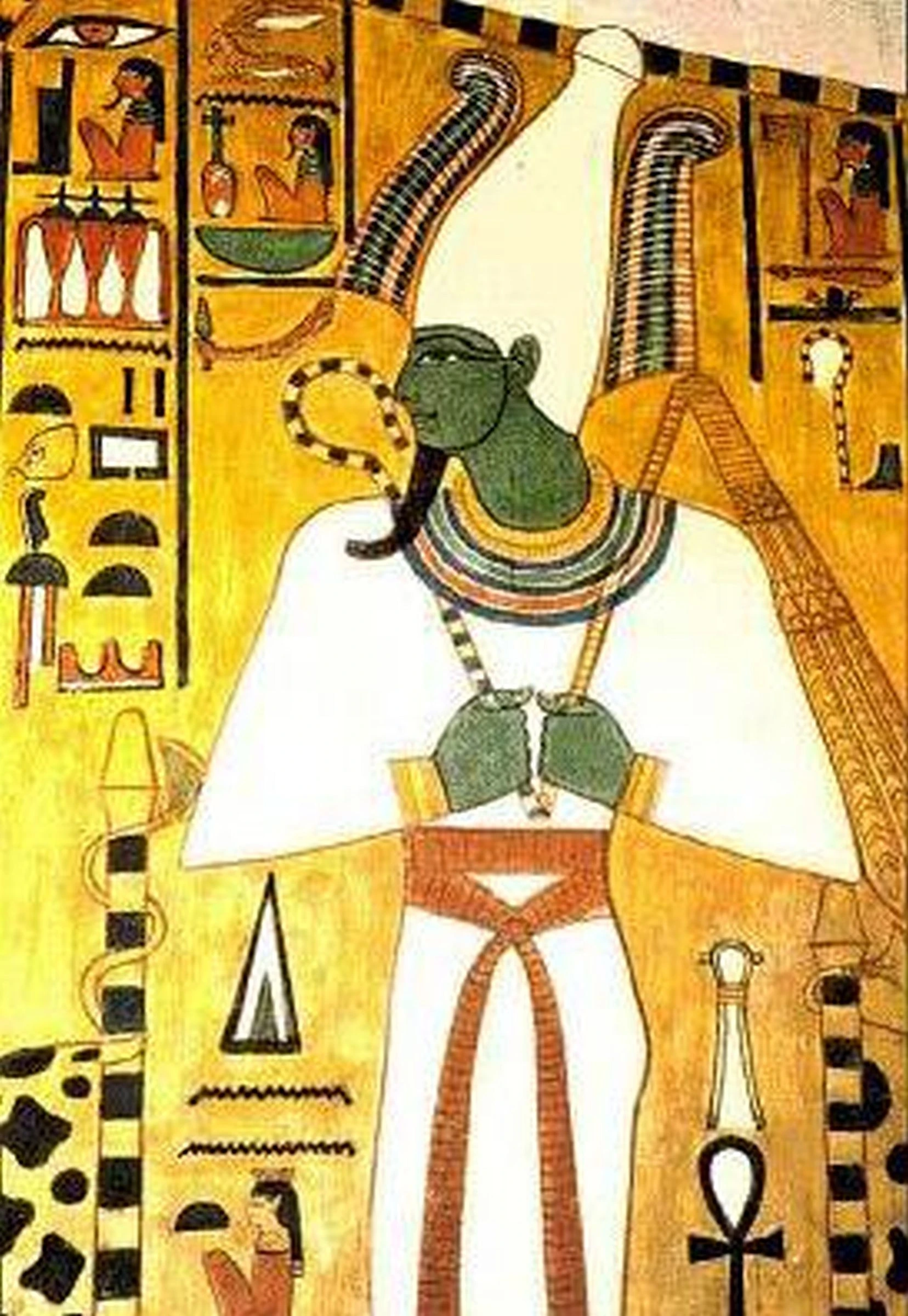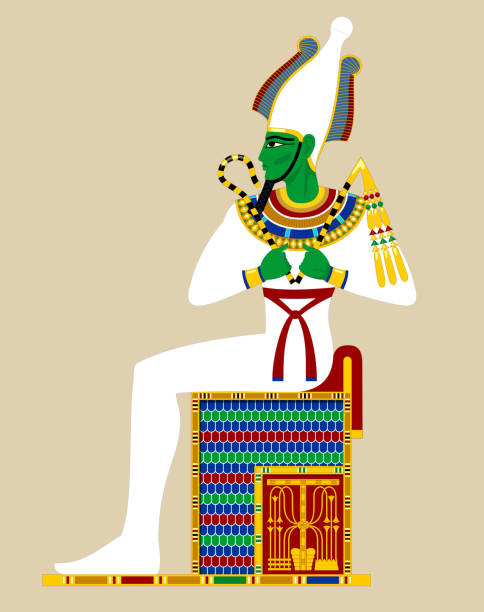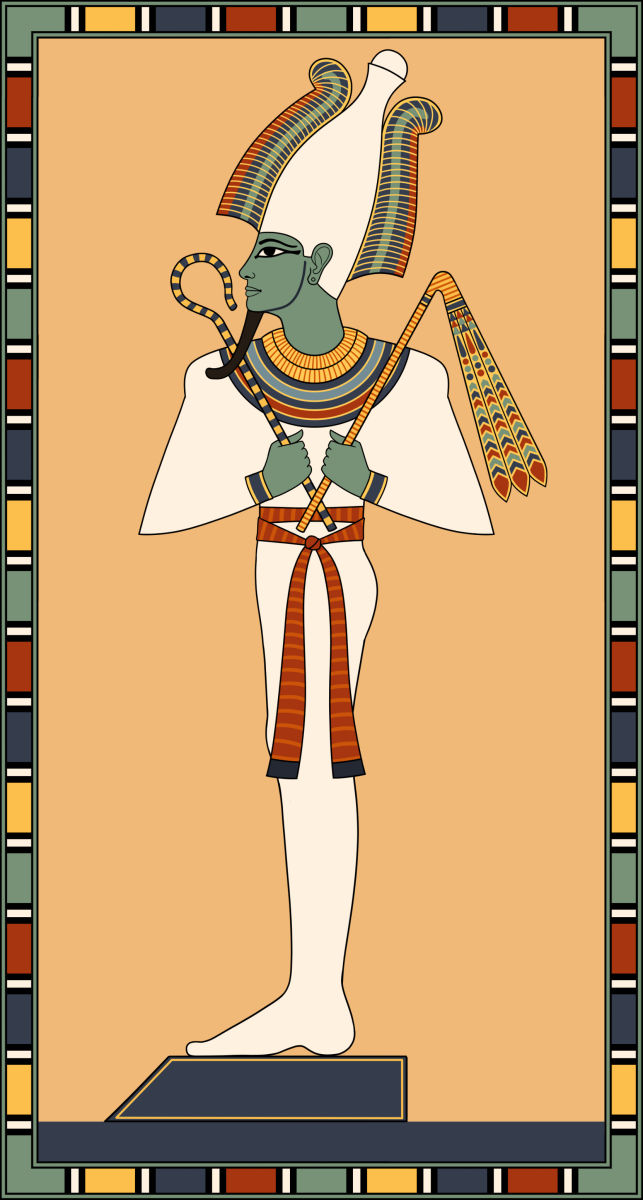Osiris: The Revered Egyptian God of Rebirth, Renewal, and the Afterlife

Osiris, known as Usiris in Greek and variously transliterated in Egyptian as Asar, Aser, Ausar, Wesir, or Ausare, holds a prominent place in the pantheon of ancient Egyptian deities. Revered as the god of life, death, and fertility, Osiris played a central role in Egyptian religious beliefs and rituals, embodying the cyclical nature of existence and the eternal journey of the soul.
In Egyptian mythology, Osiris was the son of the earth god Geb and the sky goddess Nut, born into the divine lineage of the Ennead, the nine principal deities of the Egyptian cosmogony. From a young age, Osiris exhibited wisdom, compassion, and a deep reverence for the natural order of the cosmos, earning him the admiration of both mortals and gods alike. As a divine ruler, Osiris became associated with kingship, agriculture, and the bountiful harvest, symbolizing the benevolent forces of creation and sustenance.

One of the most enduring myths surrounding Osiris is the story of his tragic death and miraculous resurrection. According to legend, Osiris was betrayed and murdered by his jealous brother Set, the god of chaos and disorder, who coveted his throne. Set conspired to entrap Osiris by tricking him into entering a coffin, which he then sealed and cast into the Nile River. Upon learning of her husband’s fate, Osiris’ devoted wife Isis embarked on a quest to retrieve his dismembered body, symbolizing her unwavering love and devotion. Through her magical prowess and divine intervention, Isis succeeded in reassembling Osiris’ scattered remains, except for his phallus, which had been devoured by a crocodile. With the aid of the god Thoth, the ibis-headed deity of wisdom and magic, Isis fashioned a golden phallus to replace the missing organ, thus ensuring Osiris’ restoration to wholeness.
The resurrection of Osiris symbolized the triumph of life over death and the promise of renewal and regeneration in the afterlife. Osiris ascended to the realm of the dead, where he became the benevolent ruler of the underworld, presiding over the judgment of souls and the bestowal of eternal life. As the god of the afterlife, Osiris offered solace and guidance to the departed souls, ushering them into the realm of the blessed dead, known as the Field of Reeds.

In addition to his role as the god of life and death, Osiris was also revered as a fertility deity, associated with the annual flooding of the Nile River and the rejuvenation of the land. His union with Isis, often depicted in sacred iconography as a divine marriage, symbolized the union of heaven and earth, the divine and the mortal, and the perpetuation of life across the generations. The worship of Osiris and Isis formed the cornerstone of Egyptian religious life, inspiring a rich tapestry of rituals, festivals, and cultic practices dedicated to their veneration.
The cult of Osiris spread throughout Egypt and beyond, enduring for millennia and leaving an indelible mark on the religious and cultural heritage of ancient Egypt. Temples dedicated to Osiris, known as “Osirion,” served as sacred centers of worship and pilgrimage, attracting devotees from all walks of life. The annual festival of Osiris, known as the Osiris Mysteries, was a time of solemn rites and communal celebration, commemorating his death and resurrection and reaffirming the bond between the living and the dead.

In conclusion, Osiris, the Egyptian god of life, death, and fertility, occupies a central place in the religious and cultural landscape of ancient Egypt. Through his mythic exploits, divine attributes, and enduring cultic practices, Osiris embodied the timeless principles of creation, transformation, and renewal, offering spiritual guidance and solace to generations of devotees. As a symbol of resurrection and eternal life, Osiris continues to inspire awe and reverence, reminding us of the enduring power of faith, love, and the eternal cycle of existence.